Despite fifty-plus years of abandonment, the house's interior remains quite intact. Much of the finish detail likely dates to the 1840s or 1850s, or about when the braced frame addition was constructed.
 |
| The log portion's interior. For some reason, all trim is missing from the back wall, but remains elsewhere. |
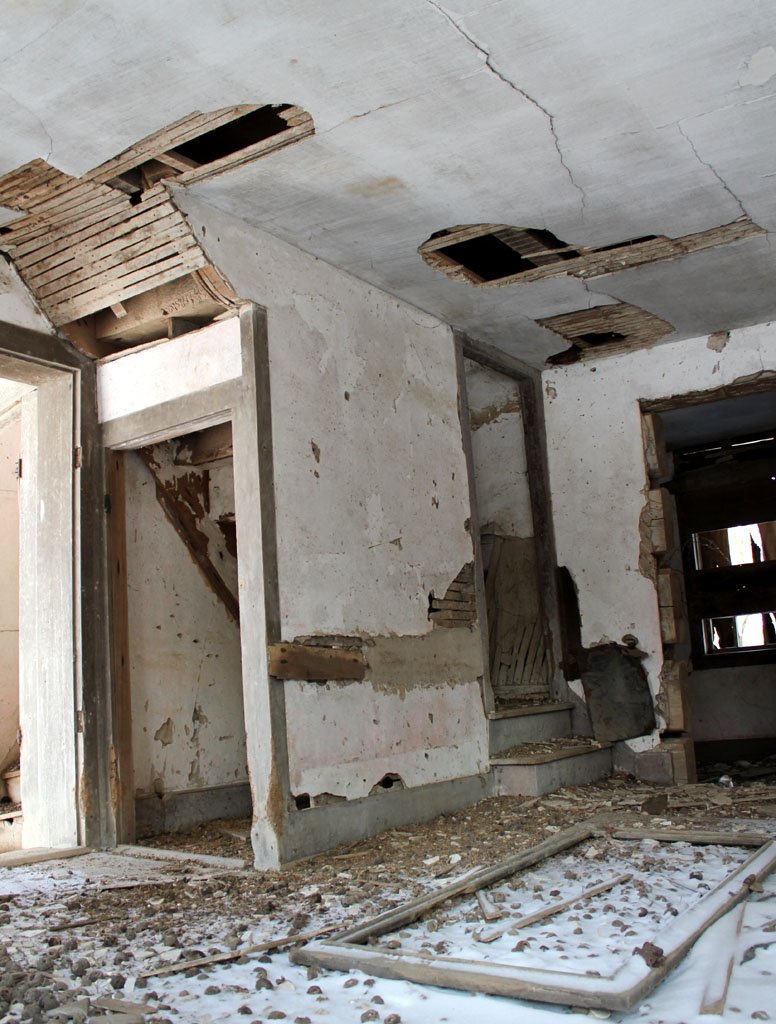 |
| Enclosed stairs with closet underneath; log portion. Earlier structures had less sophisticated, more steeply rising staircases. The last step lies outside of the stairwell itself, a typical arrangement. |
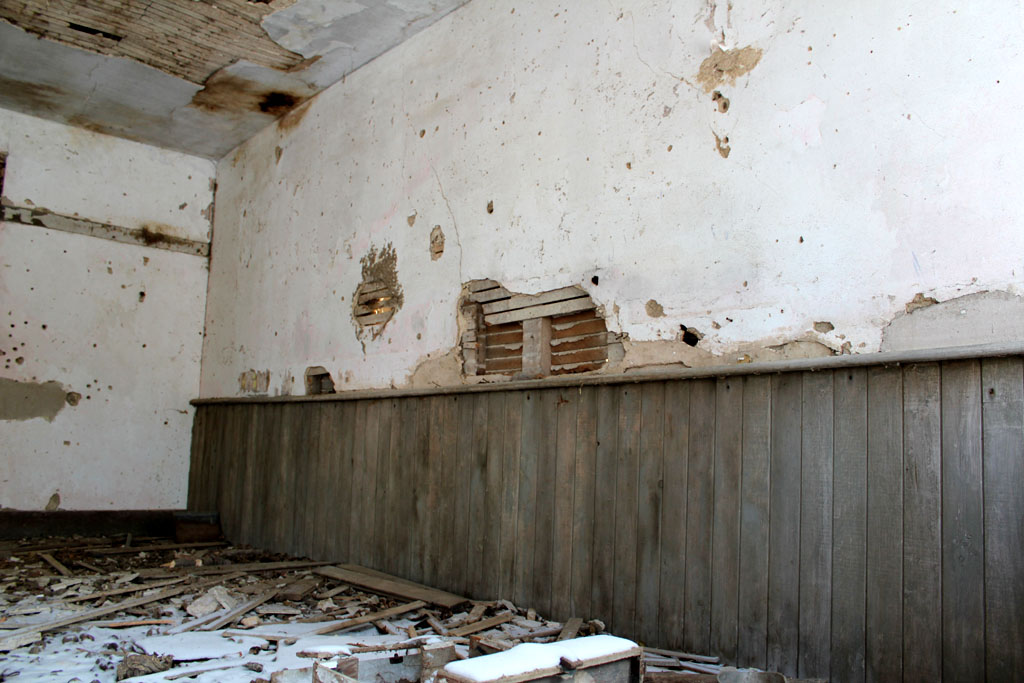 |
| Wainscoted interior wall. This wall may have been moved, for it contains horizontal lath, rather than the diagonal lath seen elsewhere. The home's current room configuration is rather strange (see the floor plan at the end of this post). |
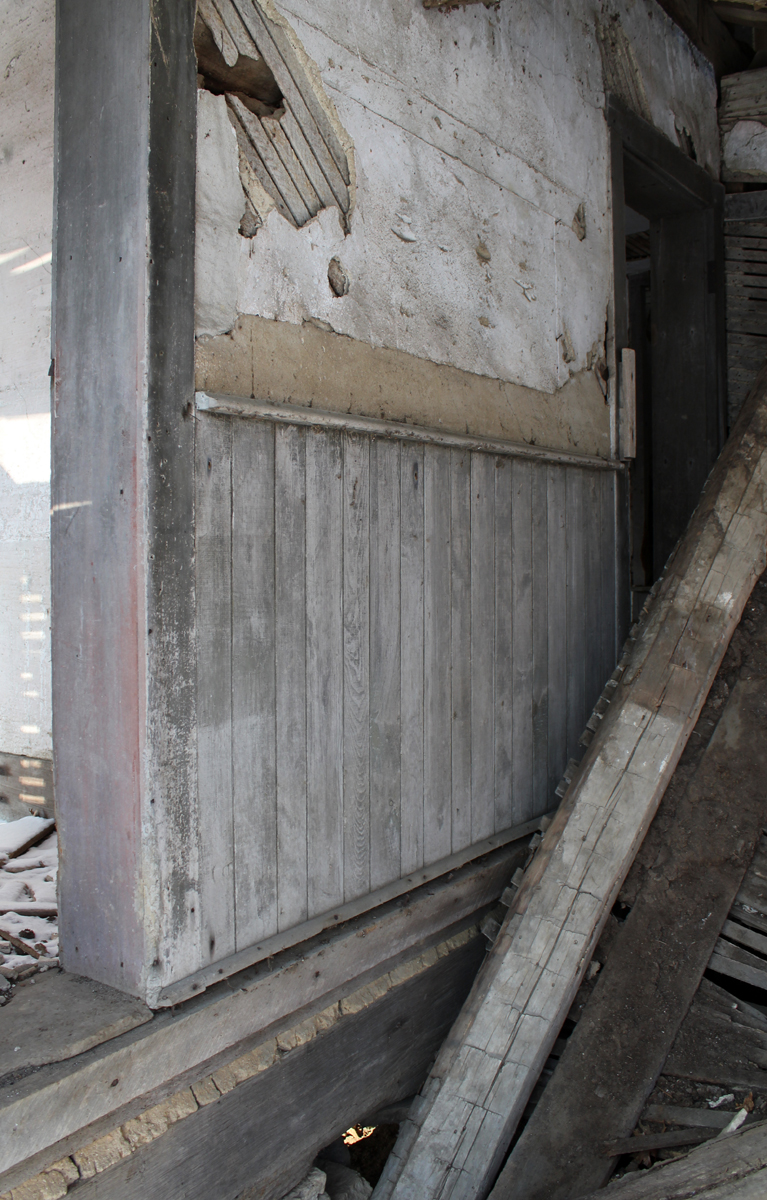 |
| Seen in the kitchen (?) addition, this was once the house's rear wall. The left door leads into a small, narrow room, while the other door exits into the primary living space. Intact daubing is visible below the wall itself. |
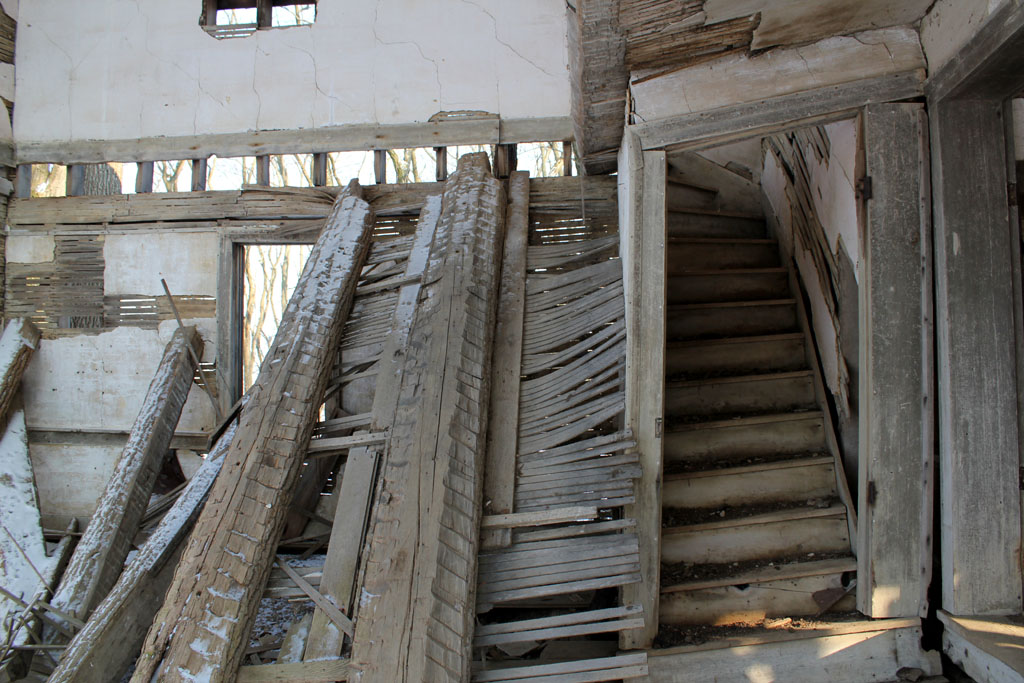 |
| Braced frame addition, interior. This addition is free-standing, connected to the log portion only by a shared roof structure. The lack of connection between the house's second floor rooms necessitated a second staircase. The joists are gigantic; larger than the logs (!) that compose the original house. |
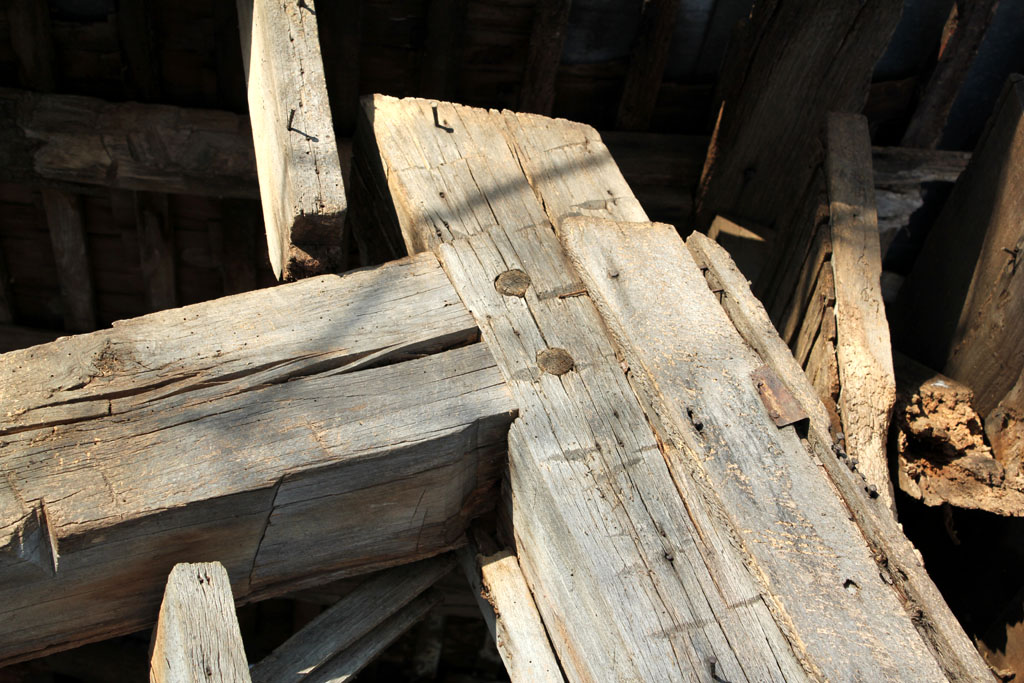 |
| Mortise and tenon, rear addition. This joint was secured without nails. |
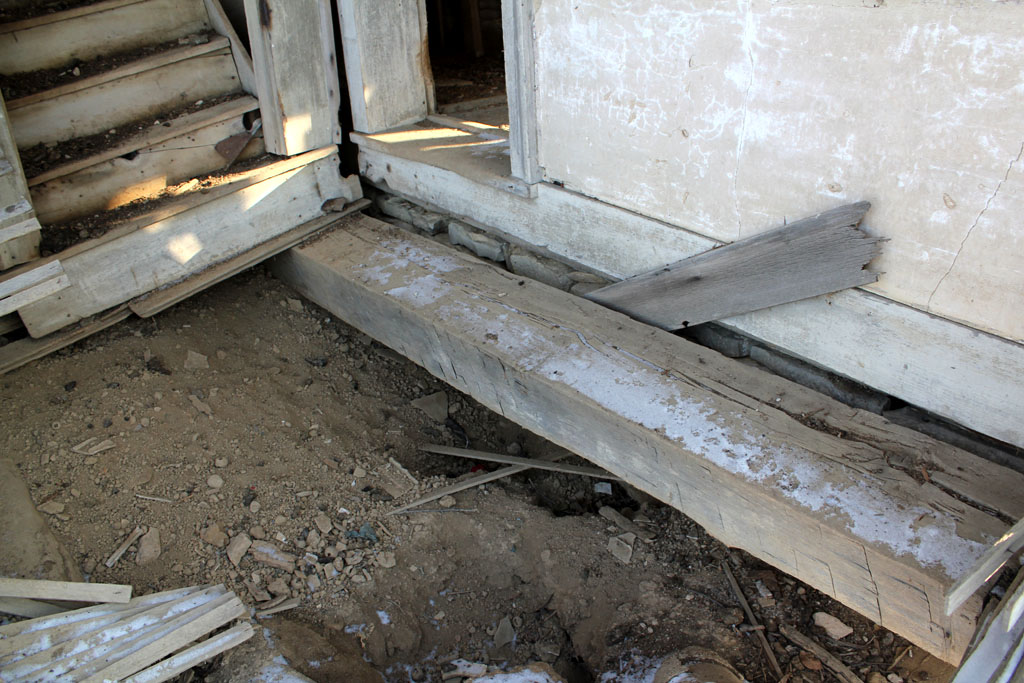 |
| I have no idea why these joists are so darn large. |
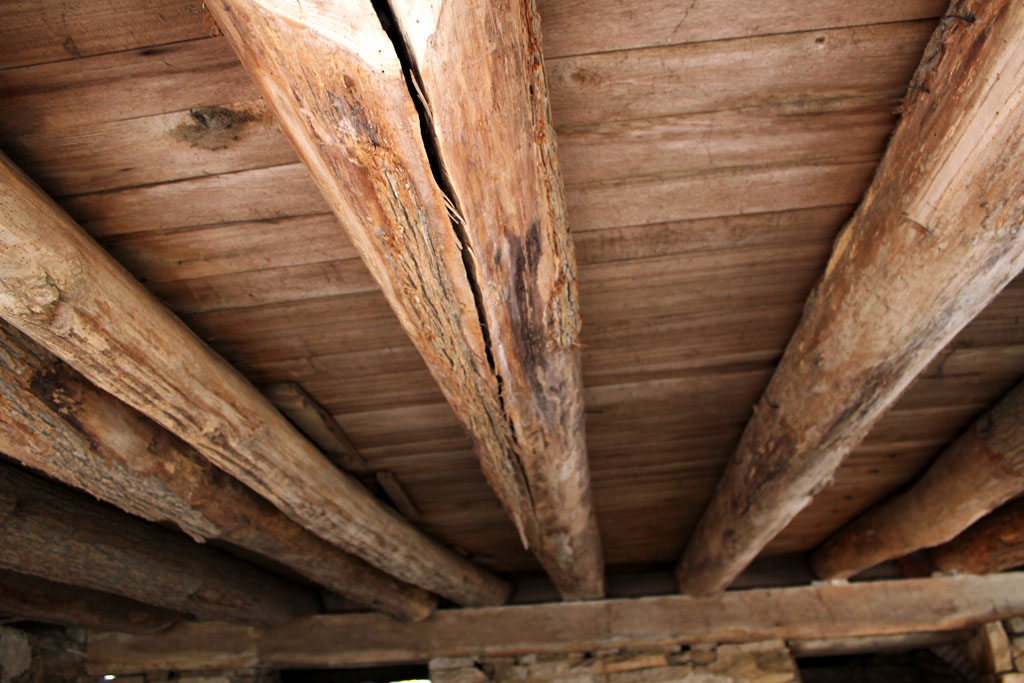 |
| The log portion's joists, however, are more what I'd expect to see. |
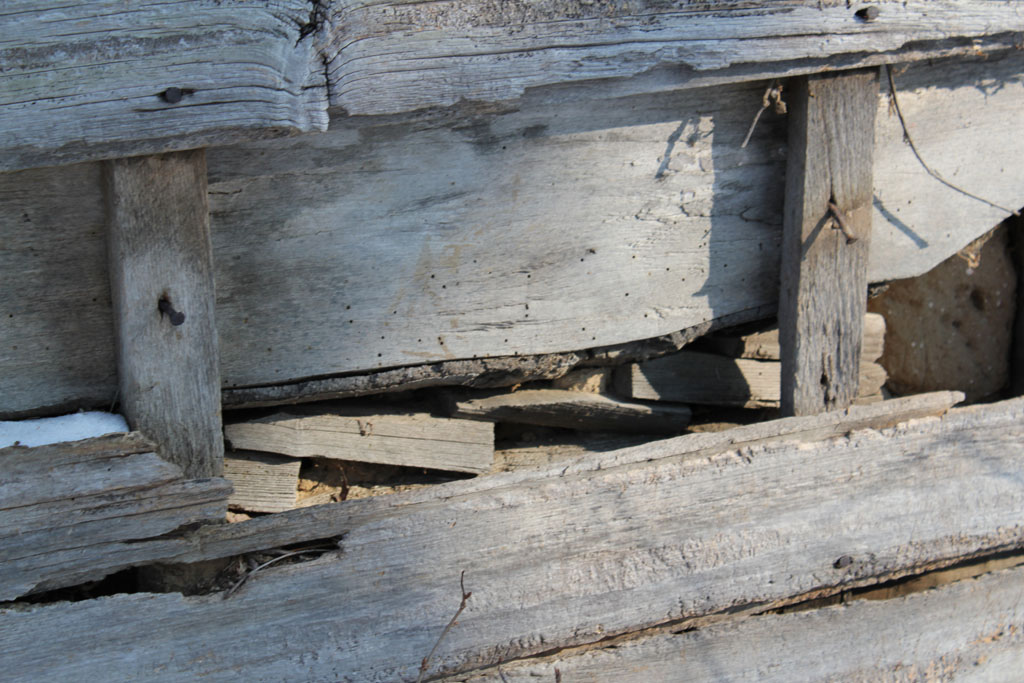 |
| The word "chinking" refers to the objects (wood slabs, in this case) placed between the logs of a log building. The mortar that fills the gaps in the chinking is known as "daubing." In recent years, the two words have become synonymous. |
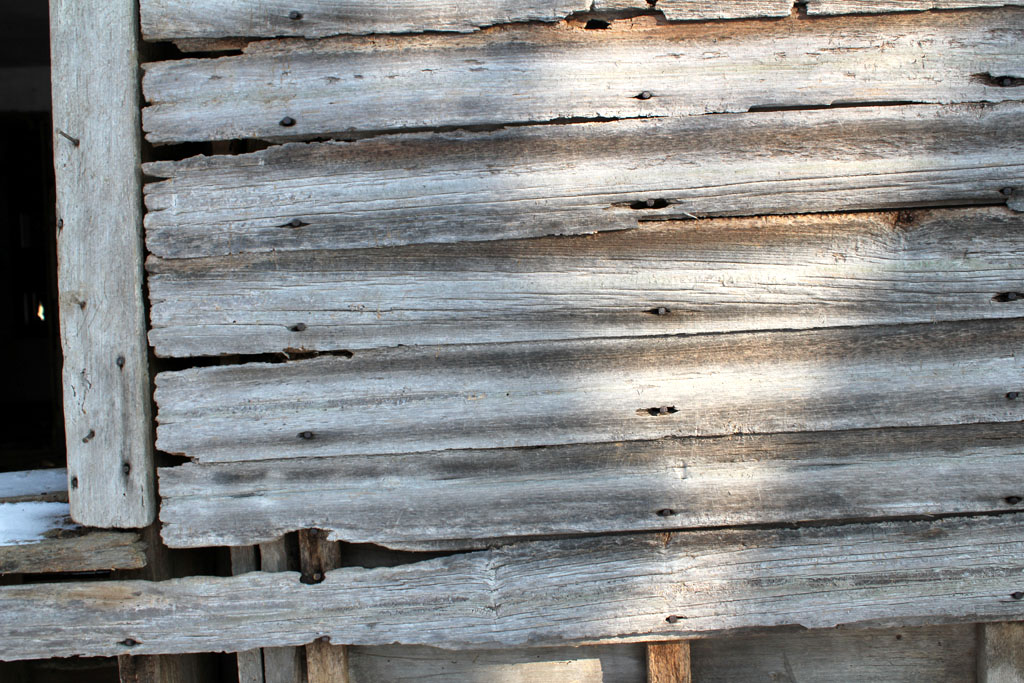 |
| Though the house's trim is secured with square nails, this siding uses round nails. Dating buildings by nail type is difficult, but, at least, the varying nails seen here indicate that the trim and siding are not contemporaneous. |
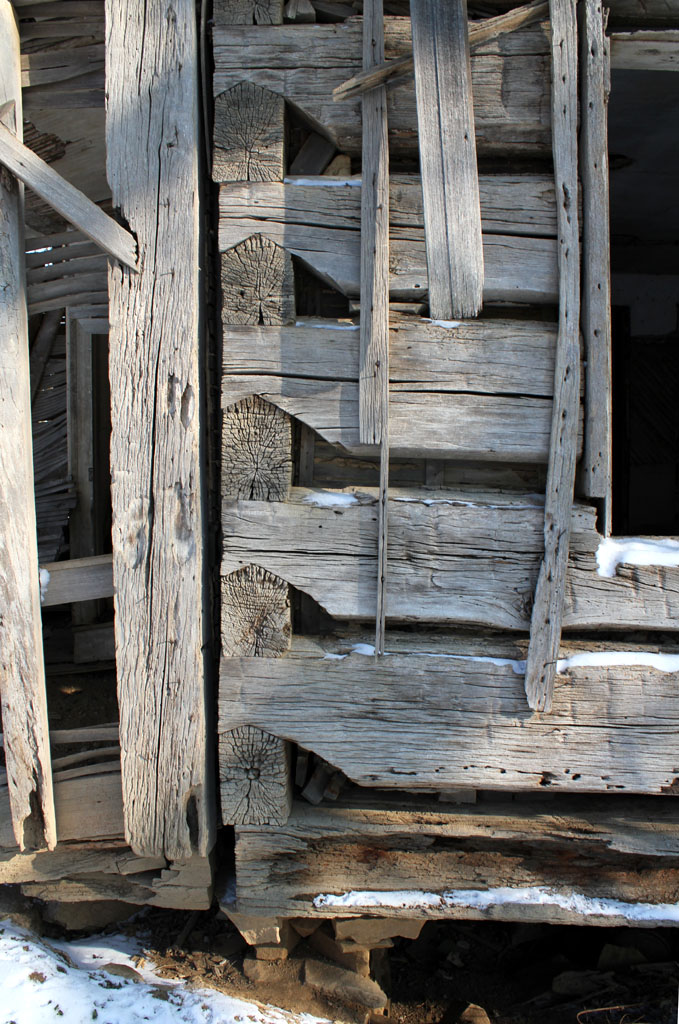 |
| So-called steeple notching is seldom seen on a post-1820s building unless it was sided immediately following construction, as was probably the case here. |
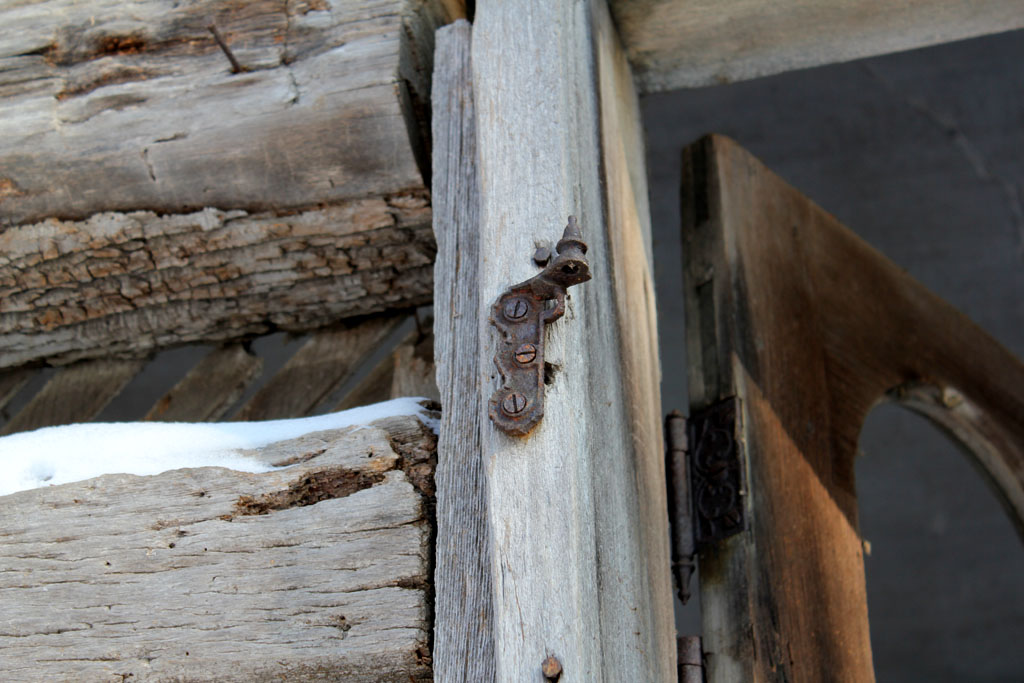 |
| Screen door hinge, probably from the late 19th century. The bark-covered log might be a good candidate for dendrochronological dating. |
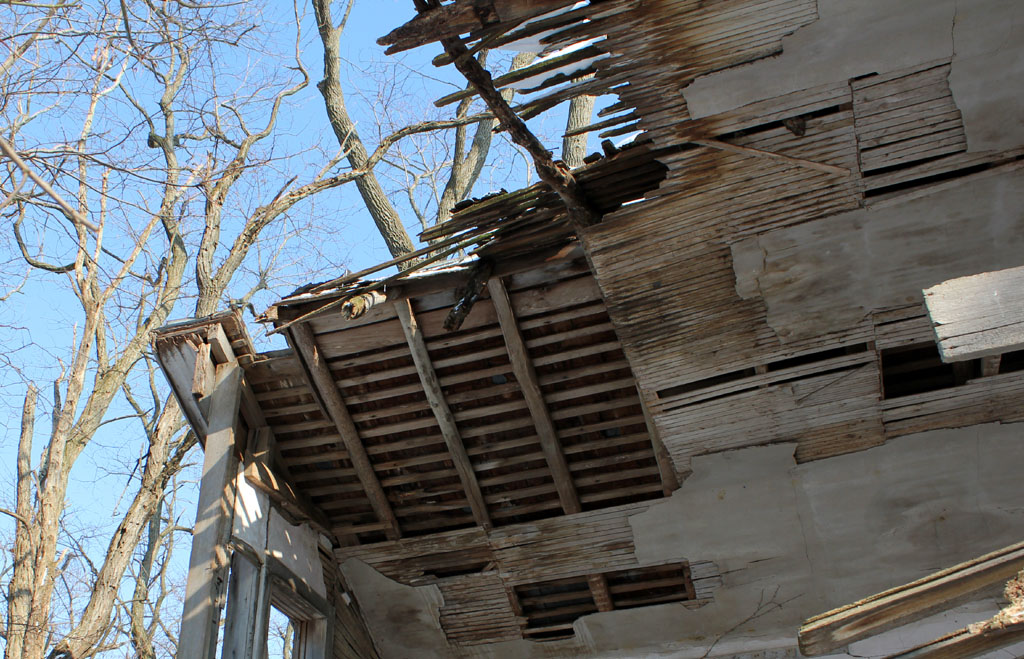 |
| The ends of these pole rafters are attached to a board running parallel with the roof ridge, inspired by balloon frame construction. According to Donald Hutslar, framing such as this is not seen on buildings constructed before the 1830s or 1840s. |
 |
| Lastly, a floor plan, not entirely to scale. I suspect that the log section was once divided into two rooms of roughly equal size, and featured two front entries. |















No comments:
Post a Comment